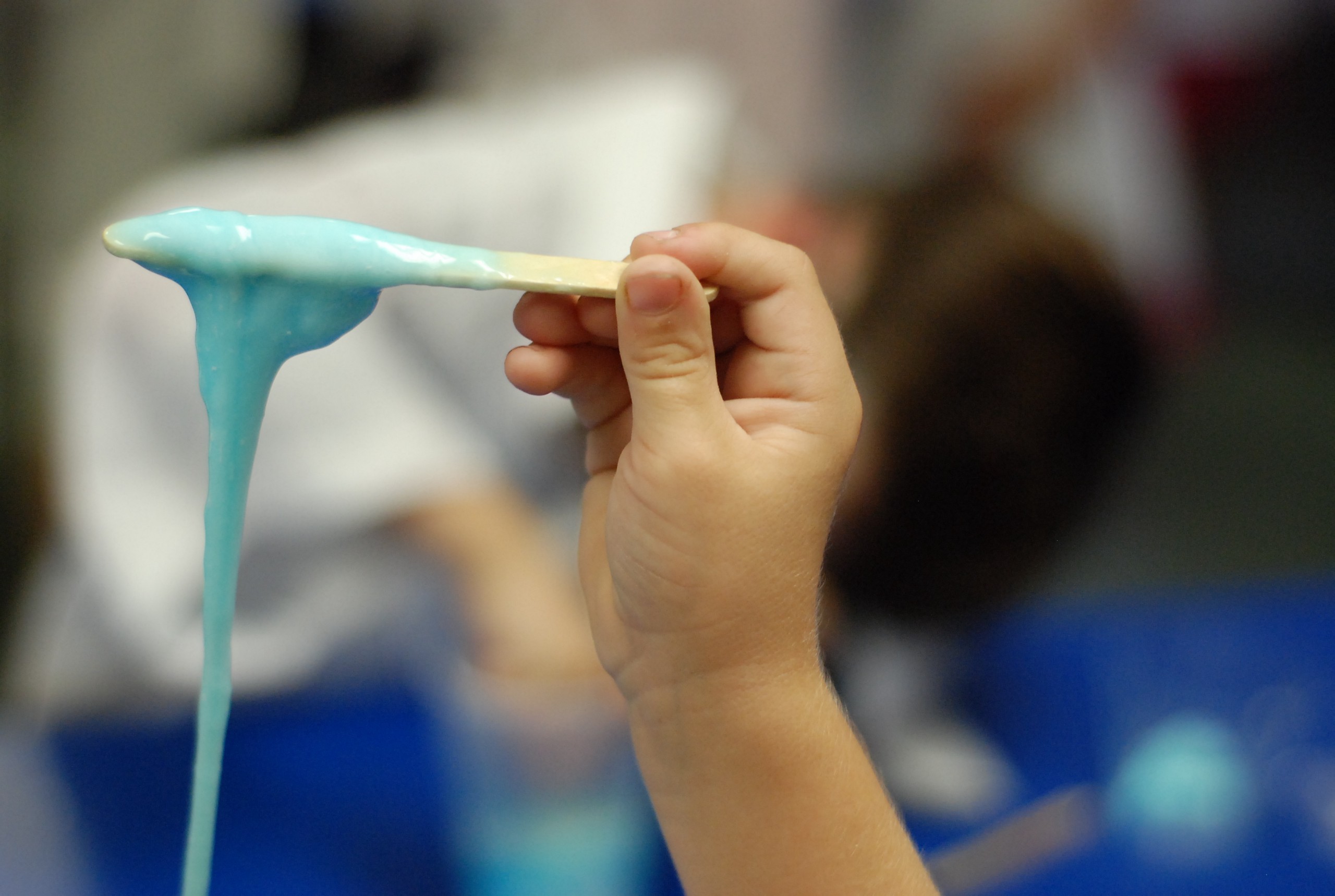

You might think Nickelodeon invented the idea of sliming people. The green goo is so key to its brand that it was even part of the children television station’s logo for a while.
According to Slimed! An Oral History of Nickelodeon’s Golden Age, the creators of the movie Ghostbusters tried to sue a Nickelodeon show for stealing the idea of green slime. They dropped the lawsuit when it was pointed out that the network had been sliming kids since 1979, whereas Ghostbusters was only just made in 1984.
In reality, though, TV slime is much older and has multiple uses beyond children’s television.
A substance known as “gunge” was first seen on TV on the BBC in the late 1960s. It was part of a recurring sketch in Peter Cook and Dudley Moore’s show Not Only But Also. Each week a guest was challenged to an improvisational poetry contest against Cook, with Moore acting as referee. All three would sit around a tank filled with a thick fluid dubbed “BBC gunge.” If the contestant or Cook hesitated or deviated from the theme, they’d be catapulted into the tank, reciting poetry.
Sadly, if there is archive footage of John Lennon being gunged on this show–he was a guest and appeared in the pilot–I can’t find it.
Gunge moved to children’s TV in the 1970s with the influentially anarchic Tiswas. Up until then, kids’ TV had been a reasonably well-behaved affair–reverent children doing useful things, guided by presenters taking to the role of kindly aunt and uncle. Tiswas was different. It was naughty. It was messy. It covered people in slime.
Canadian TV show You Can’t Do That on Television started playing the slime game in the early 80s, and it soon became a staple across Nickelodeon shows.
Today, it’s a global phenomena. The world record for the most people gunged/slimed in three minutes is currently held by the New Zealand show What Now, in front of the British show Blue Peter, which had claimed the crown only 10 days before. The record currently stands at 70, in case you think you can beat it.
Gunge may have some of its roots in the British theatrical tradition of pantomime, reaching well back into the 19th century. With a sense of chaos partly derived from traditions of carnival and clowning, pantomimes often feature a so-called “slosh” scene, the entire stage covered in a form of explicitly anarchic mess. This might include paste traditionally for decorating, dough from baking, soap from washing, or water in a bathroom scene that spills out from the stage into the audience.
Sliming may also have links to the comic tradition of using custard or cream pies, which has a history on stage and in clowning and carnival. The first instance of a pie-ing on screen occurs in the 1909 silent film Mr. Flip. Here, a man moves around town, flirting with a series of women who all take revenge on him with a pie to the face.
The pie soon became a common trope on screen. Chaplin gave us the first actual pie fight in the 1916 film Behind the Screen. By 1927 Laurel and Hardy’s Battle of the Century reportedly used over 3,000 of them (watch out for the dentist scene). Popular in cartoons throughout the 20th century, face pies were also used as political acts in the 1970s. Chumbawamba’s 2004 song “Just Desserts” is an ode to the history of political pie-ing, including a sample of Anita Bryant being hit in the face with a pie by a gay rights activist.
If you want to play at home, you can make gunge yourself easily enough. As Rebecca Onion writes in her recent piece about the sociology of slime for The Atlantic, the popularity of Nickelodeon-style slime has led to a range of spin-offs. In the late 1990s, Burger King even had a slime dipping sauce.
Most slime spin-offs, however, have been toys, some with roots in a much longer history of children’s science activities–the simple trick of mixing cornstarch with water, for example, and perhaps adding a bit of green food coloring for fun. The trick with PVA glue and borax is more slimy, though, if you’re really ambitious. The cornstarch version should be strong enough to run on (it’s a non-Newtonian liquid, if you want the science bit).
If you want vats of the smoother flowing Nickelodeon-style gunge, apparently the trick is to find some sort of industrial food thickener, though jello, Cream of Wheat, baby shampoo, and vegetable oil have all played a role over the years.
And why would you want to gunge yourself? Well, there are plenty of reasons. One might be the fetish scene, such as SLOSH (Society for Lovers of Slapstick Happenings), which has been going strong for 25 years. You’ll have to head to Google for your own links to videos of that, though.


How We Get To Next was a magazine that explored the future of science, technology, and culture from 2014 to 2019. This article is part of our Histories of”¦ section, which looks at stories of innovation from the past. Click the logo to read more.
